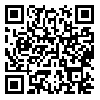Volume 1, Issue 1 (1-2014)
نظریه و عمل 2014, 1(1): 27-48 |
Back to browse issues page
Download citation:
BibTeX | RIS | EndNote | Medlars | ProCite | Reference Manager | RefWorks
Send citation to:



BibTeX | RIS | EndNote | Medlars | ProCite | Reference Manager | RefWorks
Send citation to:
Gooya Z, Fadaie M R, A’gah Z. (2014). Mathematics Teachers’ Approaches to “Listening” in Mathematics Classes: A phenomenographic approach. نظریه و عمل. 1(1), 27-48.
URL: http://cstp.khu.ac.ir/article-1-1849-en.html
URL: http://cstp.khu.ac.ir/article-1-1849-en.html
Abstract: (15312 Views)
The ways that mathematics teachers listen to students’ explanation, influence their understanding of students and their teaching activities. If teachers be informed about different ways of “listening” to students’ ideas and conceptions concerning mathematics, they might be able to use listening as an effective teaching method to enhance students’ mathematical learning. The related literature indicates that teachers’ familiarity with different “listening” approaches, could potentially help them to set up the stage for more interaction between students, teachers, and their learning environments. In such cases, students are gradually become skillful in realistically assessing their ideas, revising them and deepening their mathematical learning. We, thus, designed and conducted a study with five mathematics teachers in grades 6 to 8, to learn more about the ways they listened to students in their mathematics classes. All participants were volunteered female teachers with at least bachelor degree in mathematics. The research paradigm of the study was qualitative and the research method was phenomenography. Therefore, observations and interviews were the main instruments for the data collection. As Marton (1988) suggested, the categories of descriptions made up the main results of this research. So, the findings are three major and distinct categories to reveal the commonality and differences of the nature of “listening” concerning mathematics teachers in their classrooms. These categories had great consistency with Davis’ (1997) theoretical framework of three approaches to “listening” including evaluative, interpretive and hermeneutic.
Keywords: Listening, mathematics Teaching, mathematics teacher at guiding cycle, evaluative listening, interpretive listening, hermeneutic listening
Type of Study: Research |
Published: 2014/01/15
Published: 2014/01/15
| Rights and permissions | |
 |
This work is licensed under a Creative Commons Attribution-NonCommercial 4.0 International License. |





